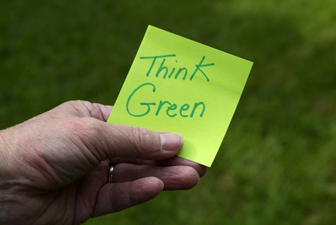How to Make Your ESL Classroom Green for Earth Day

Now's your chance! Earth Day is near, and there’s no better time to use the language skills your students are acquiring and use them to help save the environment.
Vocabulary that Saves the Day
Start by going over essential vocabulary, anything that relates to the environment or recycling practices like paper, glass, plastic, organic, recycle, etc…Make sure you introduce vocabulary in context through examples that clearly illustrate the meanings of the words. Then review these words by using the Earth Day Word Search, Natural Disasters Word Search, The Environment Word Search, or make your own with our fabulous Word Search Creator!
The Three Rs
One of the keys to successfully helping the environment is recycling, but more specifically, there are three factors that help us focus our efforts: reduce, reuse and recycle. Take the time to teach your students about the importance of the three Rs and illustrate how each works.
- Teach students what it means to reduce something. Tell them that if they eat 3 candies instead of 10 per day, they are reducing the number of candies they eat, and therefore reducing the amount of sugar they consume. In this case, the concept of reducing is linked to making less garbage. Give your students an example. If they buy lots of small juice boxes they make a lot of garbage. If they buy one big juice box and refill washable bottles, they’re making less garbage. Ask them to come up with more examples of ways to reduce garbage.
- Teach students what it means to reuse something. If they fill a plastic bottle with water instead of throwing it away, they are reusing it. The concept of reusing is linked to using an item more than once. Give them an example. If the supermarket gives you your groceries in a plastic bag, you can keep the bag and use it the next time you go to the market. Ask students to provide more examples of reusing.
- Most students understand what it means to recycle, but go over the concept nevertheless - ask them what things they recycle at home or in their city. The concept of recycling is linked to turning something that was once useful into another useful item. Give them examples of materials that may be recycled like paper and glass. Ask students what other materials may be recycled.
Finish up with the recycling game. Prepare a bag full of “garbage”: empty plastic bottles, sheets of newspaper, and plastic fruits or vegetables, as well as toy foods, perhaps hamburgers and hotdogs. Set up three bins clearly labeled paper, plastic, organic (or use pictures for little ones). Divide students into two teams with the big bag of garbage between the two. Students take an item from the bag and place it into the right container. After the garbage has been sorted out, go through the contents of each container with your students and see if any items have been placed in the wrong bin. Congratulate your students! They are now prepared to separate garbage and recycle useful materials. Finally, set up different bins for paper and plastic in your classroom, and tell students that from now on everyone will help out the environment by separating garbage.
The Energy Game
Can kids learn anything from a simple board game? They sure can! This Energy board game was ingeniously designed to teach kids a lesson or two about the responsible use of our resources. Find out who wins the game and saves the environment in the process!
Lessons Learned
A great way to review everything learned in class about the responsible use of resources is to give students this wonderful Happy Earth Day Coloring and Activities Book, where they once more see the ways in which they can help the environment on a daily basis.
Eco-Websites
There are several websites targeted to children of all ages, whose goal is to teach them about the environment, the effects of contamination and pollution, and the things we can do to help. Introduce your students to these websites and encourage them to continue exploring them at home. (Note: Although these sites are for kids, your students may not have the right English reading level to navigate them on their own. Still, they contain valuable material that should not be too difficult to understand if it’s presented with your guidance.)
They just have to be given the chance to prove that they can be responsible, too. And don’t forget to set the example! Show students what you do on a daily basis to protect the environment and they will surely follow suit!
And be sure to check out our Earth Day worksheets section for more activities and ideas!